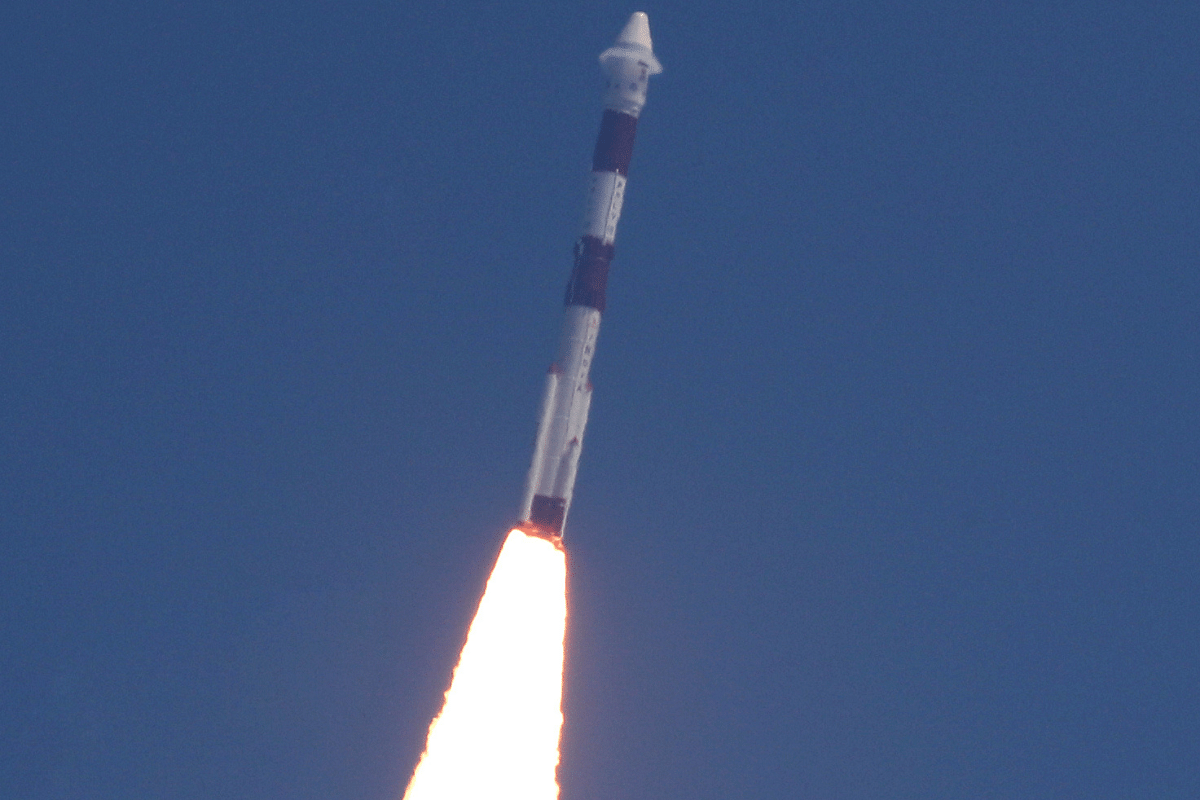Science
Explained: ISRO PSLV-C51 Launch Of 19 Satellites Including Brazil's Amazonia-1
- India’s PSLV-C51 successfully launched Amazonia-1 along with 18 co-passenger satellites from Satish Dhawan Space Centre SHAR, Sriharikota.

PSLV-C51 lifting off into space (ISRO/Twitter)
India's Polar Satellite Launch Vehicle PSLV-C51 lifted off today (28 February) at 10.24 am from Satish Dhawan Space Centre SHAR, Sriharikota, carrying the landmark Brazilian satellite Amazonia-1 and 18 co-passenger satellites.
After a flight time of close to 17 and a half minutes, the primary satellite Amazonia-1 was successfully separated from the launch vehicle and injected into its planned orbit. The rest of the satellites followed suit and were placed in orbit close to two hours after launch.
The mission was executed successfully, said Indian Space Research Organisation (ISRO).
The PSLV-C51 is a milestone mission in many ways.
It is the first space launch by India in 2021.
The primary payload, Amazonia-1, is the first Brazilian satellite to be launched from India.
Furthermore, the PSLV-C51 mission is the first dedicated launch for NewSpace India Limited (NSIL), a Government of India company under the Department of Space that serves as ISRO's commercial arm.
The NSIL was incorporated on 6 March 2019. Its work mainly revolves around enabling industry participation in the country's space-related activities as well as promoting and seeking commercial gains from India's advanced and ever-flourishing space programme.
Brazil's Amazonia-1 is the first Earth-observation satellite designed and developed entirely by the South American country.
It is part of the Amazon mission, which includes two other satellites, Amazonia-1B and Amazonia-2. Together, the fleet is expected to provide remote-sensing data for the purpose of observing and monitoring deforestation, especially in the Amazon region.
Amazonia 1 will take pictures of the planet every five days with the help of the wide-view optical imager on board. It will be capable of providing data from a particular place in two days if required.
The satellite can observe a range of about 850 km at a resolution of 64 m.
"Amazonia 1 will provide images for environmental and agriculture monitoring throughout the Brazilian territory with a high rate of return visit. It will also serve to monitor the coastal region, water reservoirs, environmental disasters, among other applications, Brazil's National Institute for Space Research (INPE) has said.
The INPE is executing the Amazon project with the help of the country's Ministry of Science, Technology and Innovations and the Brazilian Space Agency.
The Amazonia-1 had left for India in the third week of December on an Emirates B777 plane. Since then, and till its launch today, it had been part of launch preparation activities at Satish Dhawan Space Centre in Sriharikota.
Besides Amazonia-1, the PSLV-C51 launched 18 satellites – four under the Indian National Space Promotion and Authorisation Centre (IN-SPACe), which is an independent nodal agency under the Department of Space, and 14 under the NSIL.
Three of the four IN-SPACe satellites were the UNITYsat – a combination of three student satellites – designed and built jointly by Jeppiaar Institute of Technology, Sriperumbudur (JITsat), G H Raisoni College of Engineering, Nagpur (GHRCEsat), and Sri Shakti Institute of Engineering and Technology, Coimbatore (Sri Shakthi Sat), ISRO revealed.
Space Kidz India's Satish Dhawan Sat (SDSAT) was the other IN-SPACe student satellite.
While the UNITYsat will look to provide radio relay services, the SDSAT nanosatellite will study radiation levels/space weather and demonstrate long-range communication technologies.
Among the 14 NSIL satellites launched were 13 American commercial satellites and one Indian satellite.
The Indian payload is the technology demonstration satellite 'SindhuNetra'. Among the United States satellites is the technology demonstration satellite SAI-1 NanoConnect-2 and 12 two-way satellite communications and data relay SpaceBEE satellites.
One important satellite that unfortunately missed the PSLV flight was Bengaluru-based space startup Pixxel's 'Anand'.
Pixxel had announced on 23 February that it would not fly its satellite on the PSLV-C51 mission because of the emergence of software issues during the final satellite testing.
The company has said that it would pursue reevaluation and testing of its satellite software and look for the next closest launch opportunity.
The Pixxel satellite is expected to be India's first commercial private satellite in orbit.
When it does go up, Anand will beam down good-quality data from space in the form of pictures. Areas such as agriculture, oil and gas, urban monitoring, climate control, and forestry will benefit from the data. (More about Pixxel here.)
The PSLV-C51 is the 53rd flight of the PSLV and the 78th launch vehicle mission from Sriharikota.
After today's launch, India has placed a total of 342 satellites from 34 countries in orbit thus far.
The Department of Space received a higher budgetary allocation in 2021 than in the previous two years – Rs 13,949.09 crore, with Rs 8,228.63 crore earmarked for capital expenditure.
The NSIL was allocated Rs 700 crore.
Support Swarajya's 50 Ground Reports Project & Sponsor A Story
Every general election Swarajya does a 50 ground reports project.
Aimed only at serious readers and those who appreciate the nuances of political undercurrents, the project provides a sense of India's electoral landscape. As you know, these reports are produced after considerable investment of travel, time and effort on the ground.
This time too we've kicked off the project in style and have covered over 30 constituencies already. If you're someone who appreciates such work and have enjoyed our coverage please consider sponsoring a ground report for just Rs 2999 to Rs 19,999 - it goes a long way in helping us produce more quality reportage.
You can also back this project by becoming a subscriber for as little as Rs 999 - so do click on this links and choose a plan that suits you and back us.
Click below to contribute.
Latest